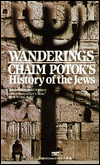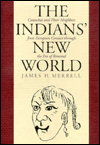Melungeons, history, genealogy, research, articles - 2005 Kennedy article
As promised in the above article, I’m now sharing both my father’s and my DNAPrint and EuroDNA results. As you might recall, my brother’s results were:
DNAPrint 2.5:
Indo-European: 98%
Sub-Saharan African: 2%
EuroDNA (based on his 98% Indo-European):
50% Northern European (northern/western Europe)
25% South Asian (India-Pakistan)
15% Eastern European (Turkish-Greek/Mediterranean)
10% Middle Eastern
In order to gauge both the accuracy of the tests and to hopefully better determine our genetic origins, my Father and I also participated in both the DNAPrint and EuroDNA testing process. My results were as follows:
DNAPrint 2.5:
100% Indo-European
EuroDNA (based on 100% Indo-European):
45% Northern European (northern/western Europe)
25% Middle Eastern
25% Eastern European (Turkish-Greek/Mediterranean)
5% South Asian (India-Pakistan)
My results very closely reflect what we expected, given my brother’s results and the fact that we are full siblings. We also expected my South Asian to be less, as his features show “south Asian” more than mine, though physical appearance isn’t always reflected by measurable genes. In summary, I tested 55%, or thereabouts, non-northern European while my brother tested approximately 52% non-northern European.
Since our Mother is deceased, we could only test our Father. While he has a mixed heritage also, we have assumed that Dad’s results would show more northern European than ours, given his more “traditional” northern/western European appearance. In fact, Richard and I estimated that he would test out at 70% northern European and the remaining 30% a mixture of the others. His actual results were:
65% Northern/western European
15% Middle Eastern
10% Eastern European (Turkish-Greek)
10% South Asian (India-Pakistan)
While we can only estimate our Mother’s DNAPrint and EuroDNA results, based on my and my brother’s results, when coupled with my Father’s more northern European results, we are led to estimate that her results would have approximated 30% northern European, 4% sub-Saharan African, and the remaining 65% or so divided among the remaining Middle Eastern, Turkish-Greek, South Asian categories. Again, exactly what one might expect from her physical appearance. Our hope is to even more closely approximate her likely genetic heritage via the testing of two surviving great aunts.
In short, our experience with the DNAPrint and EuroDNA analyses has been extremely enlightening and absolutely confirming of what we have suspected all along.
"

The Melungeons: The Resurrection of a Proud People. An Untold Story of Ethnic Cleansing in America







